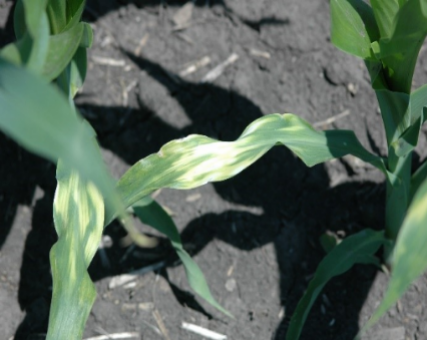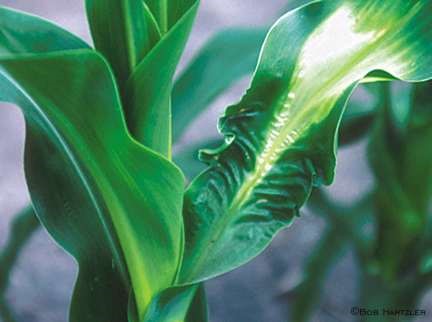- Preemergence residuals should be applied as close to planting as possible to maximize the length of control of problematic weeds.
- Residual herbicides should include multiple effective sites of action on the targeted problem weed(s) at label recommended rates.
- Organophosphate (OP) insecticides tank mixed with certain herbicides can be injurious to crops.
Herbicide programs continue to get more complicated each year. Weed resistance has driven this issue year after year, with waterhemp having documented resistance to some of the more common sites of action available; ALS, HPPD and PPO inhibitors, to name a few. We have put a lot of focus on waterhemp, and rightfully so, but we are starting to see some resurgence in more competitive weeds species such as: common cocklebur, giant ragweed and velvetleaf.
Herbicide programs are most successful when they maximize their residual potential in crop and when they include multiple effective sites of action on the targeted weed(s). Maximizing the residual potential simply means that you don’t want to apply your preemergence residual too far ahead of your planting date as you will lose that many days of residual control. To mitigate some of the pressure on the POST herbicide, it is critical to apply that preemergence residual at planting or as close to planting as possible to best utilize that length of residual. Using multiple modes of action is recommended for BMPs (best management practices) for weed resistance management and it can help broaden the spectrum of control. For example, applying a premix in soybeans that has a PPO inhibitor and an ALS inhibitor will provide one effective site of action on waterhemp, but the remaining ALS inhibitor is effective on giant ragweed, so the herbicide is still bringing value. Ensuring that you have multiple effective sites of action in the tank will help alleviate some of the pressure on the POST herbicides. Let the PRE herbicides “thin the heard.” Corn preemergence residuals are typically easier to predict. Most times the tank mix will include atrazine with either an HPPD inhibitor or a LCFA (Long Chain Fatty Acid) inhibitor, and sometimes both. Atrazine is effective on a large range of weed species, including waterhemp, while the HPPD and LCFA are also very effective on waterhemp, typically our most problematic weed.
Last, but not least, the use of organophosphate (OP) insecticides for below ground insect control mixed with certain preemergence herbicides can cause crop injury. The use of OP insecticides with ALS, HPPD or PPO inhibiting herbicides often comes with severe crop injury, or even the loss of the crop. This is due to OP insecticides and ALS and HPPD herbicides utilizing the same metabolic detoxification pathway, resulting in a toxic buildup of these products. With some combinations, the injury can be detrimental to grain yield, while other combinations may result in only a temporary injury (Figs. 1 & 2). Pyrethroid insecticides may provide a lower risk alternative to the organophosphate insecticides when ALS, HPPD or PPO herbicides are used. The key to successful management is to always read and follow the label and make sure you cross-check compatibility of your herbicide program against any at-plant soil applied insecticides. This also applies to any post-emergent insecticide applications that are planned or made in response to a pest outbreak as there is usually a wait period to when it is safe to use certain OP insecticides following a preemergence herbicide application.
As the spring season approaches it is important to keep in mind that successful weed management requires several BMP’s. One of those BMP’s is the use of a preemergence residual with multiple effective sites of action on the targeted problem weed species. It is also imperative to apply that preemergence residual as close to planting as possible to gain greater weed control for a longer period in crop. Without the use of preemergence residuals, weed control will most likely be poor or ineffective. For more information on weed resistance management contact your local FS Crop Specialist.

Fig. 1 above: HPPD herbicide + OP insecticide injury on corn. (source: Dr. Aaron Hager; University of Illinois)

Fig. 2: above ALS herbicide + OP insecticide injury to small corn. (source: Iowa State University Extension)